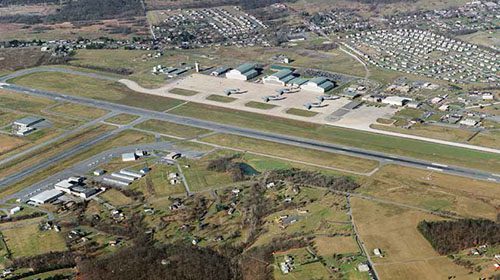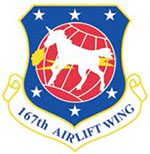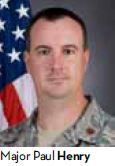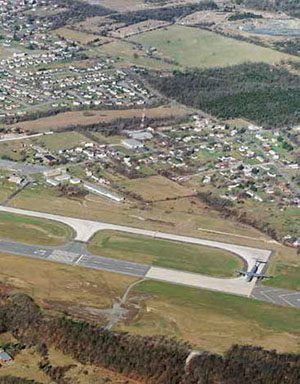 With a cargo bay large enough to carry six Apache helicopters or five Bradley tanks, the C-5 is a massive aircraft. And it took a massive runway conversion to allow joint-use Eastern West Virginia Regional Airport (MRB) to accommodate the military behemoth.
With a cargo bay large enough to carry six Apache helicopters or five Bradley tanks, the C-5 is a massive aircraft. And it took a massive runway conversion to allow joint-use Eastern West Virginia Regional Airport (MRB) to accommodate the military behemoth.
MRB put the finishing touches on its four-phase, $48 million runway/taxiway project in last fall. Originally projected to be a single project spanning two construction seasons, the endeavor stretched over six years due to funding limitations and work scope that was more complex than initially anticipated.
 factsfigures factsfigures
Project: Runway & Taxiway Reconstruction/Extension Location: Eastern West Virginia Regional Airport Cost: $48 million Funding: U.S. Dept. of Defense Military Construction Program Prime Consultant & Airfield Design: Atkins North America Prime Contractors: Clark Construction (phase 1); Head Inc. (phases 2 & 3); Atlantic Contracting & Material Co. (phase 4) Pavement Design: Tigerbrain Engineering Airfield Lighting Fixtures: Crouse-Hinds; ADB Airfield Solutions; Multi-Electric Mfg. (MALSR) NAVAID Relocation: The Burns Group Geotechnical & Surveying: Triad Engineering Concrete Paving: Head; Atlantic Contracting & Material Co. Asphalt Paving: Jefferson Asphalt Products Co. Earthwork: Independence Excavating; Kinsley Construction; David H Martin Excavating; Atlantic Contracting & Material Co. Electrical: M. C. Dean; Barnes & Powell Electrical Co.; Wellington Power; Portico Services Quality Control: Engineering & Materials Technologies Pavement Markings: Midlantic Marking; Roads & Runway Striping Service; Falcon UHP Runway Grooving: Safety Grooving & Grinding Concrete Cutting: East Coast Concrete Cutting Co. Concrete Breaking: Pieces Breaking Service Rubblization: RMI Worldwide PCCP Sawing & Sealing: East Coast Concrete Specialties Cement-Stabilized Subbase: Slurry Pavers Blast Deflector: Blast Deflectors Seeding & Mulching: Oswald & Sons Nursery |
The goal of the project was to accommodate the West Virginia Air National Guard's conversion from C-130s to a fleet of 10 C-5s. One of the largest military aircraft in the world, the C-5 requires an 8,000-foot runway for full missions. Before the project, MRB's runway was not much more than 7,000 feet.
While the project was fully funded by the U.S. Department of Defense Military Construction Program, the funding arrived in increments, which required the project to be divided into four phases, explains Major Paul Henry, deputy base civil engineer for West Virginia Air National Guard's 167th Airlift Wing.
The large scale, multi-phase project presented ample challenges for Airport Manager William Walkup. "There were periods of time when we actually had to move some of the users off the field," Walkup recalls. "The (airport's only) runway was shortened to 2,300 feet for about a two-month period and was operational only for very small aircraft. We were down to 4,100 feet for about a year, which caused us to relocate our charter business. We went without an instrument landing system for about two years, which was very challenging."
Four Phases, Six Years
In Phase 1 of the project, which began in July 2006, the airport shortened its 7,015-foot runway so crews could fix a 10-foot hump in the west end. Before the project, the hump on Runway 8-26 was so severe, one pilot said he couldn't see the 8 end from the 26 end. Other pilots described flying into MRB as "landing uphill."
Removing the hump, however, was no simple task, explains Chris Holmes, senior project manager for prime consultant Atkins North America. "We cut out 10 feet – not only from the runway depth, but for the entire width of the primary airspace surface, which is about 1,000 feet wide. That's a large swath of dirt and rock," emphasizes Holmes.
In all, crews removed 700,000 cubic yards of dirt and rock, and by the end of Phase 1 in August 2007, the runway length was brought up to 6,000+ feet.
During Phase 2, crews extended the west end 800 feet and milled 3,500+ feet of the original runway on the east end. The old surface was rubblized, then overlaid with asphalt. The first 1,100 feet on the west end was paved with 13 inches of Portland cement concrete (PCC), and crews also constructed a PCC turnaround. When Phase 2 was complete in August 2008, the runway was 7,815 feet long with 400-foot blast pads at both ends. The east end blast pad was constructed with full-strength pavement for future extension as an overrun, notes Holmes. New localizer equipment was also installed on the 26 end.
During Phase 3 (July 2008 to August 2010), crews extended the east end of the runway 600 feet. A connection point for the taxiway extension was constructed, and the medium-intensity approach lighting system with runway alignment indicator lights (MALSR) was replaced. The airport also added a 400-foot long blast fence at the end of the runway to protect vehicles on a nearby county road from jet blast.
In the final phase of the project, the primary taxiway was realigned and extended 1,000 feet to the east, with 25 feet of paved shoulder on each side. The extension allows pilots to launch C-5 aircraft without having to make a U-turn on the runway. To create the extension, crews excavated approximately 175,000 cubic yards of dirt and rock and constructed a 30-foot embankment. New LED lighting was also installed on the taxiway.
Throughout the project, MRB maintained a 400-foot buffer between the active runway and construction activity.
Making Adjustments
During the concept stage of the project (2004 to 2005), the original goal was to lengthen the runway 1,000 feet – 800 feet to the west and 200 feet to the east. Because the east side extension would require the relocated approach lighting system to extend past the airport's available land, the airport and design team considered other alternatives.
"Initially, the goal was to extend the runway to a minimum of 8,000 feet in order to support the Air National Guard's full mission for C-5s," recalls Holmes. "We determined that we could extend the runway to 8,815 feet by constructing a 1,000-foot paved overrun strengthened for aircraft use on the east end, which would give the C-5s the necessary pavement length for departures from the east end of the runway. However, the pilots would still use the original threshold to provide 7,815 feet for landing. From the west end, pilots have the full 8,815 feet for landing."
Wind patterns dictate that C-5 pilots depart from the east (26) end of the runway. With the original taxiway, that meant departing aircraft would have to enter the runway, turn to the east, then make a 180-degree turn to have access to the runway's full 8,815 feet for takeoff. To resolve this problem, the taxiway was extended to the east to provide direct access to the end of the runway and, therefore, eliminate the need for turnarounds.
"Doing a 180 turn in the hammerhead area at the end of the runway is very hard on the landing gear," explains Major Henry. "The gear configuration on the C-5s is a lot wider than that on the C-130s. With the new extended taxiway, aircraft can access the runway at the end of the runway and have 8,815 feet available for takeoff. Or if they are going out light, they can access the runway at the original A-1 connector and have 7,815 feet available for takeoff."
Poised for the Future
With the MRB runway/taxiway project complete, the final piece of the puzzle is in place for the West Virginia Air Nation Guard's conversion to C-5 aircraft. All told, the entire conversion cost over $300 million.
"We acquired an additional 111 acres of land, built several new buildings and a new entrance to the base, and constructed a new control tower, three 80,000-square-foot hangars with a maintenance mall, base supply, operations facility, simulator facility, fuel facility and tank farm and a new fire department," Henry itemizes. "We went from 15 acres of concrete to 44 acres of ramp area – all since 2006."
Despite the growing pains encountered during the extension project, the Air National Guard and airport consider the new runway/taxiway a win-win.
 "The Air National Guard has full access to the runway through an Airport Joint-Use Agreement," Henry explains. "As part of that agreement, the Guard helps out with a portion of the runway/taxiway maintenance costs, provides fire rescue services and the air traffic control tower and its controllers."
"The Air National Guard has full access to the runway through an Airport Joint-Use Agreement," Henry explains. "As part of that agreement, the Guard helps out with a portion of the runway/taxiway maintenance costs, provides fire rescue services and the air traffic control tower and its controllers."
MRB, in turn, has a longer runway, compliments of the federal government. "We now have an extra 1,800 feet of runway, which is always good for attracting corporations and businesses with larger aircraft," explains Walkup. "Our Inland Port Authority has been promoting our improved facilities in an effort to attract freight carriers and other business-related aircraft to the airport."


